Text
Orion spacecraft completes major testing
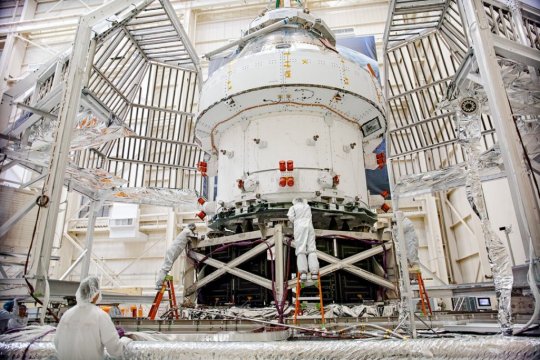
Credit: Plum Brooke
The Orion spacecraft for NASA’s Artemis I mission has successfully completed several months of simulated space environment System level testing in the NASA-owned thermal vacuum chamber at Plum Brook Station in Ohio, USA.
The testing phase was split into two phases - a 47 day thermal vacuum test and a 14 day electromagnetic compatibility, followed by an interference test in ambient conditions which both simulate the conditions the spacecraft will encounter during its voyage to the Moon and back to Earth.
‘Today marked an important milestone for the Artemis I mission to the Moon,’ said Airbus Head of Space Exploration, Andreas Hammer.
‘We proved to our customers ESA and NASA that the European Service Module, designed and built by our engineers in Bremen – supported by companies in 10 European countries - meets the requirements to withstand the harsh conditions in space.
‘The Artemis programme will land the first woman and next man on the Moon and bring them back safely to Earth, we are proud to contribute to this endeavour with all our know-how, expertise and passion.’
Pleased with the results of this crucial test, the engineering teams from Airbus, the European Space Agency (ESA), Lockheed Martin and NASA have proved the spacecraft is suitable to navigate safely through the extreme conditions that it will experience in space.
Orion will be transported back to the Kennedy Space Center to undergo further testing and prepare the spacecraft for integration with the Space Launch System rocket, beginning the next era of exploration.
Artemis I will travel around the Moon and back to Earth. Airbus in Bremen is already building the second Orion Service Module for Artemis II, where
#NASA#space#space exploration#artemis i#airbus#kennedy space center#spacecraft#testing#orion#esa#rocket#astronaut#astronauts
20 notes
·
View notes
Text
Detecting coronavirus with paper

Credit: Purdue University photo/Rebecca McElhoe
By Shardell Joseph
Engineers have developed a handheld paper divide able to detect a strain of coronavirus quickly and accurately. The strain, MERS-CoV, can be detected by the device in very small quantities, and can be read directly from the device making it portable.
As one of the select few given permission by USA health officials to use diagnostics tests for COVID-19, the Purdue University biomedical engineers claimed that this device could be used to detect the COVID-29 strain – the limitations in doing so currently is the lack of funding. According to the team, the process to scale the technology for manufacturing would cost at least a couple of million US dollars.
‘Paper-based devices are already manufactured – pregnancy tests are paper-based,’ said Purdue University Biomedical Engineering Professor, Jacqueline Linnes.
‘Because this device has a more complex shape, a process hasn’t been developed to make it available on a commercial scale. However, many processes in electronics and paper manufacturing could be translated to scaling up this device.’
But so far, Linnes’ team has just been able to produce these devices on a lab scale, which calls for cutting out the paper components by hand.
‘The most difficult aspect of producing this device is definitely the assembly,’ said Purdue University Biomedical Engineering PhD Cadidate, K Byers.
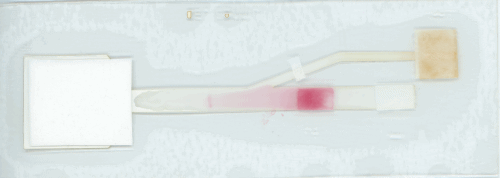
This time-lapse video shows how a paper device developed by Purdue researchers tests a sample in 40 minutes. This sample is positive for MERS-CoV, as indicated by the formation of a second line on the paper strip. Credit: Purdue University video/K Byers
These challenges may easily be overcome with existing manufacturing techniques, the researchers said.
The device format would not need to change in order to detect other diseases. As the device scales up, however, it would also need to be more sensitive to detect a lower concentration of a virus for clinical relevance.
‘This paper device isn’t dependent on a particular virus or sequence. To detect COVID-19, we would just need an assay design specific to that sequence, which could come from a nasal or throat swap sample. Just like with MERS-CoV, a user could load the assay with liquid into the paper platform, fold the device and let it run,’ Linnes said.
When the device folds over, a liquid wash and chemical substances called reagents push the assay up a paper strip to make an easily visible detection line. This automatically completes a multistep process needed for detecting a virus. A user can check the strip within 40 minutes to see if the sample tested positive.
Read the full paper at: https://pubs.acs.org/doi/full/10.1021/acsomega.0c00115?_ga=2.52130409.1579527955.1583773474-378642389.1583773474
#coronavirus#r&d#virus#outbreak#detection#detection device#Funding#USA#diagnostics#covid-19#manufacturing#purdue university#research and development#biomedical#engineers#device#portable#paper
140 notes
·
View notes
Text
Be the difference
For This is Engineering Day the Royal Academy of Engineering (RAEng) released a video where they highlight all the ways different types of engineers make a difference to the world. Watch the video below.
youtube
By Idha Valeur
The second This is Engineering Day will this year happen on Wednesday 4 November 2020 as part of Tomorrow’s Engineers Week 2020 – with this year’s theme being ‘Be the difference’.
With the main aim to inspire and give more young people the opportunity to pursue a career in engineering, regardless of their background, the RAEng is now encouraging engineers, companies and organisations to get involved with the imitative to contribute ideas and ways to present how they make a difference. This could be via social media, events or other activities.
‘As young people prepare to take their key exams and think about career choices, it’s vital that they don’t miss out on opportunities to ‘Be the Difference’ though engineering just because they don’t realise what engineering careers really offer,’ the Royal Academy of Engineering Chief Executive, Dr Hayaatun Sillem CBE, said.
Sillem added that so far, more than 150 companies and organisations have already agreed to help the academy in showcasing how different and diverse the profession is. ‘We continue our work to transform the image of engineering so that many more talented young people from all backgrounds can see a future for themselves in this vital and rewarding profession.’
#Royal academy of engineering#raeng#this is engineering day#engineering#young#engineers#future#diversity#this is engineering#difference#making a difference
6 notes
·
View notes
Text
Using technology to support diversity

Photo credit: Caydie McCumber
By Shardell Joseph
An associate professor at MIT University, USA, has written a new book named Design Justice examining the way in which technology can be functional for more people within the society. The new book focuses on the correlation between technology, design, and social justice.
In the book, Design Justice: Community Led Practices to Build the Worlds We Need, Sasha Constanza-Chock shared their experience as a transgender and nonbinary person, and explained how technology could help improve the experiences of others that belong to minority groups.
Highlighting the biases built into everyday objects, including software interfaces, medical devices, social media, and the built environment, Constanza-Chock examined how these biases reflect existing power structures in society. published by the MIT Press, the book offers a framework for fixing the shortcomings of technology in society, while suggesting methods of technology design that can be used to help build a more inclusive future.
‘Design justice is both a community of practice, and a framework for analysis,’ said Costanza-Chock, who is the Mitsui Career Development Associate Professor in MIT’s Comparative Media Studies/Writing program. ‘In the book I’m trying to both narrate the emergence of this community, based on my own participation in it, and rethink some of the core concepts from design theory through this lens.’
In one particular example, Constanza-Chock talked about how something as simple as going through airport security can become an unusually uncomfortable process. Airport’s tend to be set up with security millimetre wave scanners which are set up with binary, male or female configurations. To operate the machine, agents press a button based on their assumptions about the person entering the scanner – blue for ‘boy,’ or pink for ‘girl’. As a non-binary person, Constanza-Chock would always be flagged by the machine when travelling, prompted for a hands-on check by security officials.
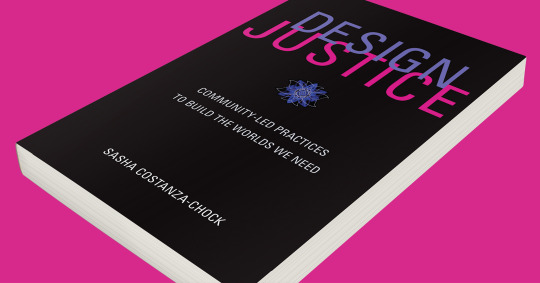
‘I know I’m almost certainly about to experience an embarrassing, uncomfortable, and perhaps humiliating search… after my body is flagged as anomalous by the millimetre wave scanner,’ Constanza-Chock wrote in the book.
This is an experience familiar to many who fall outside the system’s norms, Costanza-Chock explains – trans and gender nonconforming people’s bodies, black women’s hair, head wraps, and assistive devices are regularly flagged as ‘risky’.
The book also looks at the issue of who designs technology, a subject Costanza-Chock has examined extensively — for instance in the 2018 report ‘#MoreThanCode,’ which pointed out the need for more systematic inclusion and equity efforts in the emerging field of public interest technology.
Costanza-Chock, hopes the book will interest people not only for the criticism it offers, but as a way of moving forward and deploying better practices.
‘My book is not primarily or only critique,’ Costanza-Chock said. ‘One of the things about the Design Justice Network is that we try to spend more time building than tearing down. I think design justice is about articulating a critique, while constantly trying to point toward ways of doing things better.’
#diversity#lgbtqia#lgbtq+#nonbinary#MIT#social justice#technology#transgender#inclusion#design#justice#book#equality#systematic inclusion#gender#race#security#community
51 notes
·
View notes
Text
Addressing the public’s plastic misconceptions
youtube
Video: Is Plastic Sustainable? - By The British Plastics Federation
By Shardell Joseph
The British Plastics Federation (BPF) has released two videos to to help tackle some of the public misunderstandings around plastic, addressing its role in society and the best ways to prevent plastic waste.
The video’s were released after an international debate on plastic waste at the World Economic Forum last week, in support of the BPF’s recent document Understanding the Debate about Plastic, which outlines why plastic is important for modern life and the evidence on effective ways to reduce waste.
youtube
Video: Improving Plastic Recycling in the UK - By The British Plastics Federation
YouGov findings recently revealed over two-thirds of the public believe that plastic packaging is the most damaging material for producing carbon emissions during its lifecycle. Research into the environmental impact of plastic, however, disproved this, and indicated that that replacing plastic with other materials is not necessarily better for the environment. Academics have also cautioned against swapping plastic for other materials due to the unforeseen negative consequences it may have for the planet.
‘We hope that through widely sharing content such as these videos, we can help clear up public misunderstanding about plastic,’ said British Plastics Federation Director General, Philip Law. ‘The recent YouGov poll results show the issue clearly - most do not appreciate plastic’s role in helping us reduce greenhouse gas emissions.
‘Policymakers and the media need to take note. By turning away from plastics we may do a lot more harm to our environment than good. We must ensure we work together to make the best choices for our planet, and plastic has an important role to play in fighting climate change.’
#The British Plastics Federation#plastics#waste management#carbon emissions#climate change#plastic waste#recycling#sustainability#sustainable#carbon footprint#Packaging
57 notes
·
View notes
Text
Materials World’s top feature of 2019
As 2019 is drawing to a close, the Materials World team wanted to highlight a couple of stories to end the year on a high note. On Wednesday we shared the news story that got the most clicks on our website in 2019.
Today, we are sharing the top feature. We hope you enjoy and Merry Christmas from the editorial team.
15 UNDER 30
By: Idha Valeur
IOM3 is looking to the future and celebrating young talent and ambition. Idha Valeur talks to the ones to watch in STEM.
Kyle Saltmarsh
Age: 27
Job: Robotics Engineer at Woodside Energy.
Education: PhD Engineering in Submarine Vibration and Acoustics, BSc in Physics and Applied Mathematics, BME (Honours).
Current project: Deployment of robotic technology onto Woodside’s oil and gas plant for surveillance, and performing tasks through robot manipulation.
Achievements: Best honours thesis, several hackathon wins, top IBM 2018 graduate in Australia/New Zealand, 2018 Young Persons’ World Lecture Competition Winner, world’s largest bungee jumper, blogger and hosting a podcast to inspire people in technology.
Ultimate goal: To positively impact the world through the power of technology.

Kyle Saltmarsh Image credit: Brent Campbell
Jennie Palmer
Age: 26
Job: Research Engineer.
Education: Undertaking an EngD in Structural Metals for Gas Turbine Applications, BEng in Aerospace Engineering, with a year in industry, Swansea University.
Current project: I am researching the development of bespoke test facilities and fundamental understanding of thermo-mechanical fatigue crack growth behaviour in titanium alloys.
Achievements: Graduating with a BEng in Aerospace Engineering with First-Class Honours, presenting my research at national and international conferences, having research published in an internationally recognised journal and a Green Belt Certificate in Lean Six Sigma.
Ultimate goal: To become a well-established, technical expert in my engineering field.

Jennie Palmer Image credit: Jemima Bond
Ilija Rašović
Age: 27
Job: Lecturer at University of Birmingham
Education: MEng in Materials Science at Corpus Christi College, Oxford. DPhil in Materials at St Cross College, Oxford.
Current project: The use of fullerenes — nanometre-sized balls of carbon — in biomedical applications. One of the methods I have devised, to make them soluble in water, helps in the formation of large self-assembled structures that hold great promise as multi-modal drug delivery vehicles.
Achievements: The IOM3 international Literature Review Prize in 2016. Final of the IOM3 Young Persons’ World Lecture Competition in 2017. I joined the P1 Graphene Solutions as an advanced materials engineer and became a lecturer at the University of Birmingham. In 2019, I joined IOM3’s Younger Members’ Committee.
Ultimate goal: To make a contribution to the wide deployment of transformative nanomedicine in a clinical setting within my lifetime. My broader vision is to continue to champion materials science and make more accessible the obfuscated world of academic research.
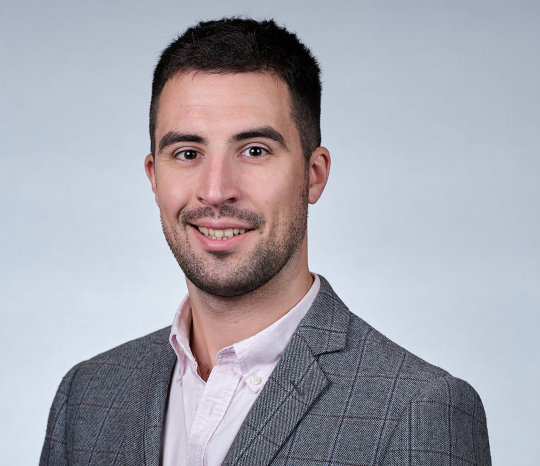
Ilija Rašović
Amanda Field
Age: 25
Job: Development Engineer.
Education: BEng Materials Science and Technology, University of Birmingham.
Current project: Trying to finish my PhD on additive manufacturing of tungsten for nuclear fusion reactors. It’s challenging but worthwhile because the success of nuclear fusion would go a long way to solving the energy crisis. I’m working in additive manufacturing.
Achievements: I have presented my work at international conferences. I was involved with an experimental parabolic flight campaign for the European Space Agency where we used a demonstrator device to 3D print metal in zero gravity. I came second in the IOM3 Young Persons Lecture Competition.
Ultimate Goal: To keep working in additive manufacturing. I’d like to stay in R&D as you get such variety in your role and you have the potential to make significant improvements to a product or a technology, or design new ones yourself.
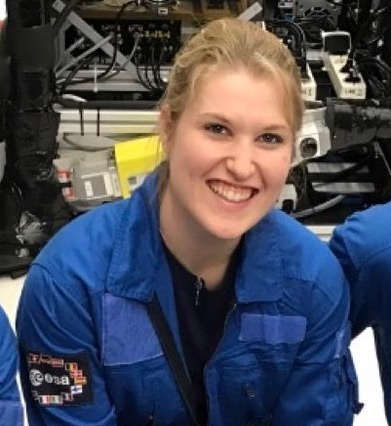
Amanda Field Image credit: Luke Carter
Jack Saunders
Age: 25
Job: PhD Student in Materials Chemistry.
Education: MChem with a year in industry, University of Manchester.
Undertaking a PhD in Materials Chemistry, University of Manchester, in collaboration with AkzoNobel.
Current project: To analyse the impact of different polymers on the corrosion protection afforded by emulsion paints. I aim to achieve this by synthesising and testing polymer’s corrosion performance. This is to better understand how polymer chemistry can affect the corrosion protection offered by the dried paint.
Achievements: A First Class Master’s degree in chemistry. My PhD at the School of Materials at The University of Manchester. Awarded the President’s Doctoral Scholar Award. Presented my work at conferences such as the RSC’s MacroGroup YRM, Dublin, 2018. Won the regional Young Persons’ Lecture Competition this year.
Ultimate goal: To develop my research and management skills in order to have my own research group in the field of polymer chemistry and colloid science.
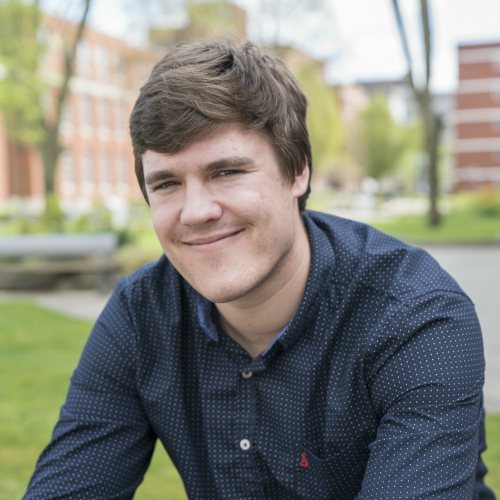
Jack Saunders Image credit: University of Manchester
Megan McGregor
Age: 25
Job: PhD Candidate at the Department of Materials Science & Metallurgy, University of Cambridge.
Education: MSci in Natural Sciences, University of Cambridge, specialising in Materials Science.
Current project: A PhD project investigating a new intermetallic alloy for commercial gas turbine engines. Specifically, trying to develop a novel coating material required to attach abrasives onto the end of rotating turbine blades, in pursuit of a more efficient sealing system.
Achievements: I enjoy teaching in the department, and was recently awarded the Departmental Demonstrator Prize. I talked at the Cambridge Science Festival and the inaugural Cambridge Soapbox Science event. I will be representing the South Eastern Region in the final of the IOM3 Young Persons’ Lecture Competition this year, selected for an RCUK Public Policy Internship at the Government Office for Science in 2018, where I got to contribute to government policy.
Ultimate goal: To see the material I am working on make it into a commercial gas turbine engine. I want to take my expertise in this area into industry, and be able to contribute to the development of the hybrid-electric aircraft sector.

Megan McGregor Image credit: Andrew Jeskins
Abigail Georgia Robinson
Age: 22
Job: Geology student.
Education: MGeol in Earth and Environmental Sciences, University of St Andrews, graduating in 2020.
Current project: I will co-lead an expedition to the Lofdal Complex, Namibia, which hosts a suite of carbonatitic and silicic igneous rocks, some of which are enriched in heavy rare earth elements. I aim to integrate geological field data with geochemical and isotopic datasets to model the petrogenesis of the scientifically interesting igneous rocks.
Achievements: I was awarded the prestigious Laidlaw Scholarship in Research and Leadership in 2018. This supported my field campaign in Armenia, to investigate the interplay between climate change, hydrology and medieval irrigation systems. I did a research placement at the Scottish Universities Environmental Research Centre where I learned to code in Python and used this to statistically investigate the geographical origin of lunar meteorites across the lunar surface. This work was included in Dr Marissa Tremblay’s published abstract and presentation at the 2019 Lunar and Planetary Science Conference, USA.
Ultimate goal: I plan to embark on a PhD on the tectonically imposed planet-wide cycling of the volatile elements. I plan to be an active communicator promoting an understanding of geoscience and the global scale problems that we, the geoscientists, can work to solve.
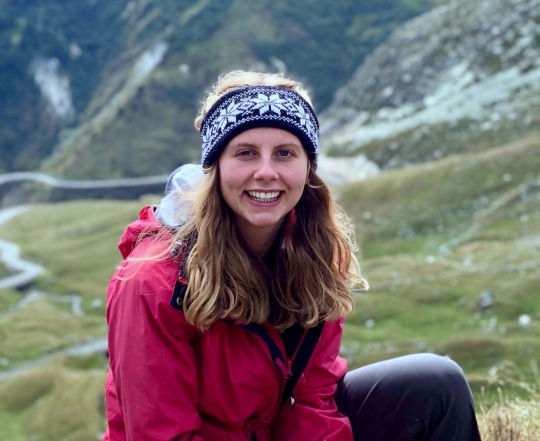
Abigail Robinson Image credit: Evan Margerum
Federica Rosaria Lisa
Age: 24
Job: Technical Graduate at British Steel.
Education: MChem Chemistry with Forensic Science with a year in industry, University of Leicester.
Current project: A variety of research and development projects – one on understanding and reducing the factors that influence power and electrode consumption at the ladle arc furnaces in the secondary steelmaking process.
Achievements: Graduated with a First Class Honours and secured a 12-month industrial placement and a place on a graduate programme. I succeeded in my secondary school exams after moving to a new continent and starting International School.
Ultimate goal: To work for a sustainable discovery/development that will improve lives and I would like to lead a company. I would also like to promote the importance of education, support developing countries in the construction of more schools and strengthen the educational system.

Frederica Lisa Image credit: Johnny Gallagher
Daniel Everington
Age: 26
Job: Materials Technologist – Surface Engineering.
Education: MEng Aerospace Engineering with a year in industry, University of Sheffield.
Current project: Surface engineering at Rolls-Royce. I’m involved with different projects across the engine, including compressor sealing systems, hot end environmental protection and anti-seize coatings.
Achievements: Developed a novel method to flow test ceramic filters used in the investment casting process. The technique contributed to a 3% improvement in casting yield and the reduced variation helps lower the amount of metal. Patents may be filed on the work.
Ultimate goal: I’d like to work with academia to co-develop novel coatings/surface treatments. I enjoy the challenges that come with working on new technology as the answers can’t simply be found in a textbook.

Daniel Everington Image credit: Alistair Coast-Smith
Louise Gale
Age: 28
Job: Materials Engineer at Rolls-Royce Plc.
Education: MSci & MA in Natural Sciences, specialising in Materials Science, University of Cambridge.
Current project: The development of ceramic matrix composites for introduction into aerospace gas turbine engines. My responsibilities include running mechanical testing programmes, supervising work at our university partners as well as the analysis and fractography of tested samples to elucidate damage mechanisms.
Achievements: Completing the Rolls-Royce Graduate Scheme, including obtaining funding for an international placement in the Materials Testing Department in Berlin. I became Technical Lead of a £2.5mln project which was part of a government-funded programme to develop SiC/SiC ceramic matrix composites. I developed the £7mln, three-year materials development component to the follow on project that was approved in late 2017.
Ultimate goal: To become an expert on ceramic and composite materials systems.

Louise Gale Image credit: Stephen Gale
James Grant
Age: 24
Job: EngD student with TATA Steel and M2A, Materials and Manufacturing Academy.
Education: School of Physics and Astronomy, Cardiff University, College of Engineering, Swansea University.
Current project: Development of novel coating solutions for the improvement of pre/post heat treatment of carbon steel conveyance tubes. My project aims to reduce high-temperature oxidation caused by the normalising process.
Achievements: I developed a novel anodisation system for fabricating alumina masks in the molecular beam epitaxy application. In addition to this, my placement with Merck successfully optimised electrophoretic fluids to further enhance the E-ink display technology. I’ve been competing in the 2019 IOM3 Young Persons Lecture Competition. Having won the SWMA heat and the South West Regional, presenting at the national final in May.
Ultimate goal: To educate and encourage the next generation of students to take up STEM subjects. I hope I can engage and excite a younger audience about materials science and demonstrate the opportunities available in engineering.

James Grant Image credit: James Grant
Vidya Chamundeswari Narasimhan
Age: 28 years
Job: Post-doctoral Research Fellow Department of Materials Science and Engineering, NTU.
Education: PhD in Materials Engineering.
Current project: Developing responsive nasogastric tubes for the elderly and using nature-derived biopolymers for biomedical applications.
Achievements: Young Scientist Award conferred by VIWA in India, Title Winner of the IOM3 Young Persons’ World Lecture Competition 2017, Women in Engineering Travel Grant in 2018, Chair of the Young Scientists Forum at the European Materials Research Society conference in Poland 2018.
Ultimate goal: To lead and manage a diverse team, foster interdisciplinary collaboration and offer R&D support for cutting edge research in the healthcare sector. I also want to contribute significantly towards mentoring the next generation of young girls towards pursuing exciting careers in STEM fields.
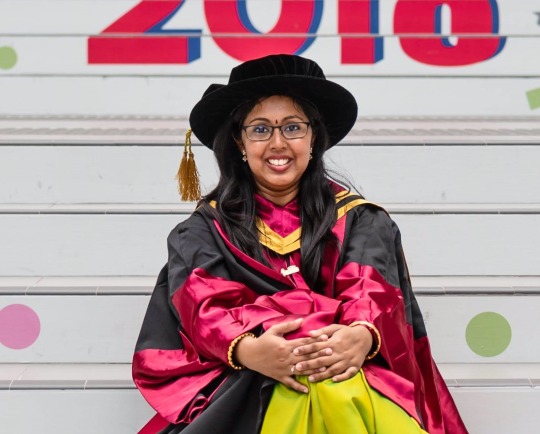
Vidya Chamundeswari Image credit: Dr Rohit Satish
Frederick Cooper
Age: 28
Job: Research Engineer and PhD student.
Education: BEng with Honours, Swansea University.
Current project: Microstructural and mechanical characterisation of flow formed F1E – a novel, maraging steel.
Achievements: Used flow form to develop materials for detailed metallographic, micro-textural, and mechanical assessment. I run two small businesses, have an Associate Diploma from the National College of Music, and an Associate Fellowship of the Higher Education Academy and was appointed as a Yeoman of the Worshipful Company of Tin Plate Workers.
Ultimate goal: To complete my current project and transfer a comprehensive mechanical property database detailing static and fatigue performance to a major engineering sponsor – to enable novel component manufacture. Further, I would like to use my experience to develop a career in public engagement or education.

Frederick Cooper Image credit: Lauren Ednie Photography
Robert Hoye
Age: 28
Job: Royal Academy of Engineering Research Fellow.
Education: PhD, Cambridge University, BE(Hons).
Current project: I am looking at two areas that could accelerate the scale of photovoltaics. This makes an attractive technology for producing clean energy, especially in remote regions.
Achievements: Developed a recombination contact to couple a metal-halide perovskite top-cell with an n-type silicon bottom cell, which lead to new design rules to identify promising classes of materials that could tolerate defects, and an all-inorganic device structure that led to 80% external quantum efficiency in solar cells. This went on display in the Deutsches Hygiene-Museum in Dresden, Germany. 2018 Young Engineer of the Year Award by the Royal Academy of Engineering, which also awarded me £500,000 to start an independent group at the University of Cambridge. European Forbes 30 under 30 list.
Ultimate goal: To create new classes of defect-tolerant semiconductors that can be used as low-cost and efficient top-cells in tandem with silicon.
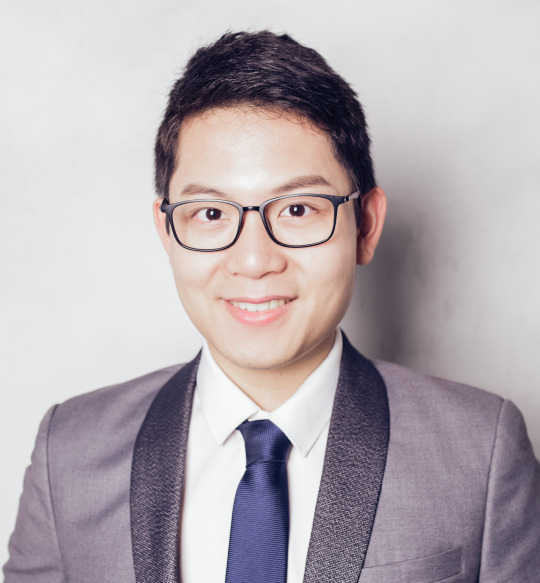
Robert Hoye Image credit: Zoe Chung
Matthew Wadge
Age: 24
Job: PhD Researcher.
Education: BSc(Hons) Biomedical Materials Science & PhD (ongoing), University Of Nottingham.
Current project: Exploring novel formation and ion-exchange reactions of titanate surfaces for biomedical applications.
Achievements: Achieved eight awards during my undergraduate degree including the Best Student Prize, Best Project Prize, and The Armourers and Brasiers’ Best Student Prize for achieving the highest project mark within the faculty. I have since won the Armourers and Brasiers’/TWI Best BSc/BEng Student of the Year Award, Best Oral Presentation Prize from the UK Society for Biomaterials Conference in 2018. Published my first journal paper during the first year of my PhD. I am one of the Nottingham coordinators for this year’s Pint of Science festival.
Ultimate goal: To try and improve a patient’s quality of life, from improving fixation of hip stems for improved longevity, through to antibacterial surfaces for minimising infections. I aim to continue on into academia post PhD to share my experiences, and hopefully train the next generation of bioengineers and biomaterial scientists.

Matthew Wadge Image credit: Matthew James
#engineering#materials science#innovation#15 under 30#top#science#STEM#research#young#professionals#iom3
40 notes
·
View notes
Text
Materials World’s top news story of 2019
As 2019 is drawing to a close, the Materials World team wanted to highlight a couple of stories to end the year on a high note. Today we will share the news story that got the most clicks on our website in 2019 and on Friday we will share the top feature. We hope you enjoy and Merry Christmas from the editorial team.
RARE PRECIOUS METAL OSMIUM CHALLENGES THE DIAMOND INDUSTRY
By: Shardell Joseph
Osmium in crystal form has attracted attention from jewellers and is set to rival the global diamond industry. Shardell Joseph reports.
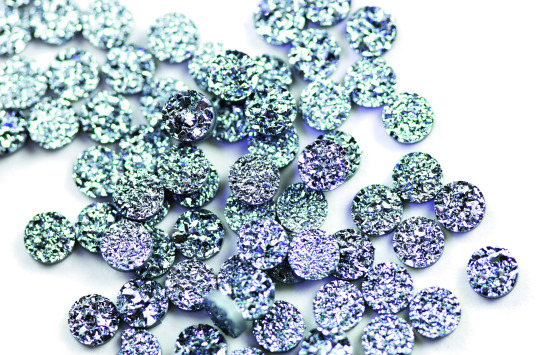
Image credit: Osmium Institute
At least a thousand times rarer than diamonds, the aesthetic of osmium has attracted attention among jewellers and watchmakers, and experts have predicted it will challenge the global diamond industry.
Co-mined with platinum, there are 2m of osmium minable on Earth, making the metal incredibly rare. The crystallisation imparts a unique lustre, resulting in a distinct blue-silver tint, which has been nicknamed ‘the sparkle’.
Due to its high level of toxicity as a raw material, the element was previously difficult to work with, so unpopular. It has only been available for a few years after a discovery in 2013 found that crystallising the metal rendered it harmless. Now, osmium is providing opportunities for investors and possibilities for premium jewellery designs.
The Osmium Institute in Germany is globally marketing the metal in anticipation of it rivalling the diamond industry. Osmium Institute Director, Ingo Wolf, said it had been almost unavailable for three years. There were efforts in the Osmium Institute globally to negotiate individual customs agreements with individual states. He said that deals with the USA required two years, while the Australia agreements were reached quite quickly.
‘At the same time, new shapes were prepared for the jewellery market, which can serve as semi-finished products,’ Wolf said. ‘The current growth is about 100% per month. However, after a hot phase, this curve will also drop back to a more normal level if growth continues. Nonetheless, 100% per year is absolutely probable for a few years from next year.’
Osmium as a jewellery commodity is still a long way away from the value of diamond. According to Wolf, for every 0.2g, diamonds are currently valued at approximately €8,000 per carat, whereas osmium is valued at €210. However, it is highly likely the value will spike along with the demand due to the expected exponential growth of the metal.
‘Competition of cheap diamonds with Swarovski and other fiscal developments will pave the way for metals with surfaces that exceed the diamond’s radiant power,’ Wolf said.
‘The sparkle’ metal
Most commonly produced in South Africa, Canada and Russia, osmium is one of seven metals considered precious – platinum, gold, silver, palladium, iridium, rhodium and ruthenium. Among these precious metals, osmium is the rarest with the highest density. It exceeds the compression and abrasion resistance of a diamond. When osmium is cooled, it becomes a superconductor, with the capacity to transport electricity without loss.
Usually used as an alloying agent with uridium platinum and other platinum group metals, the material can be found in fountain pens and medical devices. Some compounds are used for fingerprint detection. Osmium has been used in research development as a catalyst in the process for making ammonia from combined hydrogen and nitrogen.
But handling and storing the metal is critical as its raw powdered form, called osmium sponge, is considered extremely toxic.
The powder tends to form osmium tetroxide, which is a health hazard, restricting trade of the metal between private parties.
This situation changed when it was discovered in 2013 that osmium could be crystallised and therefore detoxified. This process changes the crystal structure of osmium and hugely limits its chemical reactivity. In its unreactive crystalline form, osmium behaves even more nobly than other precious metals.
Because osmium can be crystallised in two or three-dimensional forms, osmium interests jewellers. Because of its rarity - only 30g of osmium found in 10,000t of platinum ore - its popularity among investors is expected to spike.
Among the reasons for investors to be interested in the crystallisation of osmium over diamonds are the ethical considerations.
Osmium demands very high ethical standards for sourcing the raw material. This is because the ore housing it comes from mines that supply platinum for automotive catalysts. These companies would have aready undergone a comprehensive programme to ensure compliance with strict ethical and sustainability standards. Thus investors are likely to be attracted by the guilt-free component of osmium.
42 notes
·
View notes
Text
Canadian mining company writes USA environmental report

By Shardell Joseph
Documents revealed that the Trump administration has allowed British Columbia-based mining company, Midas Gold, largely influence the writing of an environmental report. According to conservation group, Earthworks, which obtained the documents, the input Midas Gold will contribute will aid government approval for its Idaho gold mine project.
An Idaho statesman claimed that access to the environmental report proposed open-pit gold mines in central Idaho, USA, which were previously rebuffed from the Forest Service.
The report, called a biological assessment, would typically be written by the Forest Service or an independent contractor. Its purpose is to examine the potential effect the open-pit mines would have on salmon, steelhead and bull trout protected under the Endangered Species Act.
In February 2018, internal documents show the agency denied Midas Gold's request to participate as a non-federal representative in writing the assessment because the massive project would likely harm protected fish. However, by October 2018, Midas Gold was both participating and leading the writing of the document.
The company claims that Idaho there is over 113 million grams of gold and more than 45 million kilograms of antinomy at the Idaho site. The company plans on additional mining in the two open pits already there and to create a third open pit, doubling the size of the area utilised for the mining. They say they will restore ‘much of the area’ when they finish mining.
#midas gold#mining#trump administration#enviroment#earthworks#idaho#gold mines#gold#USA#the forest service#open-pit mining
44 notes
·
View notes
Text
Electrospun fibres comparable to spider silk
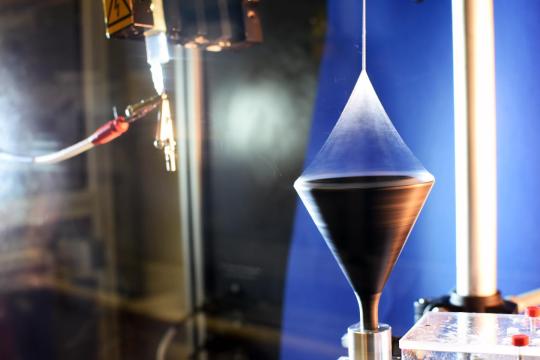
Electrospinning of a multifibrillar polyacrylonitrile fibre. Image credit: University of Bayreuth/Rennecke.
By Anthony Caggiano
University of Beyreuth, Germany, researchers have developed lightweight and strong polymer fibres through electrospinning.
Polyacrylonitrile is the chemical base of the fibre, of which a single one with a diameter of about 40,000nm consists of up to 4,000 ultra-thin fibrils.
One individual fibre is as thin as a human hair and can lift a weight of 30g without tearing – working out to about 150,000 times the weight of a fruit fly.
These fibrils are linked by small amounts of an additive, poly(ethylene glycol) bisazide (PEG-BA). Three-dimensional X-ray images show that the fibrils within the fibre are almost always arranged in the same longitudinal direction.
Bayreuth Polymer Scientist, Seema Agarwal, explained the process.
‘We prepared these multifibrillar polyacrylonitrile fibres in a laboratory for electrospinning at the University of Bayreuth and extensively tested them for their properties and behaviour. Their unique strength in combination with high toughness never ceased to fascinate us,’ Agarwal said.
Beyreuth Macromolecular Chemistry II research group leader, Andreas Greiner, said, ‘experiments on the high tensile strength of these fibres have furthermore revealed their high toughness. This means that each individual fibre can absorb a lot of energy.’
The overall properties were comparable to those of spider silk.
The researchers claim the polymer fibres are suited to technical components that are exposed to high loads. They enable innovative applications in a wide variety of fields, for example in textiles, aerospace, automotive engineering, or medical technology.
The fibres are also recyclable.
Other partners in the project were researchers at the Forschungszentrum Jülich, the Martin Luther University Halle-Wittenberg, the Fraunhofer-Institute for Microstructure of Materials and Systems (IMWS), the Rheinisch-Westfälische Technische Hochschule Aachen University, the Jiangxi Normal University, Nanchang, and ETH Zürich.
The results were published in Science. Find the paper here:
119 notes
·
View notes
Text
Pablo Escobar’s brother launches foldable phone
Image credit: Escobar Inc.
By Shardell Joseph

Brother of famous drug lord, Pablo Escobar, Roberto Escobar has unveiled a new smartphone with flexible screen and stainless steel case. The Escobar Fold One smartphone, was claimed to be developed as a bid to rival Apple technology.
Similarly to other android phones released this year, the new fold phone has a screen, which uses the android operating system, allows the phone to be used like a tablet. Escobar claimed the phone is completely indestructible.

‘Roberto Escobar, just like his brother Pablo, has always wanted the best,’ said Olof Gustafsson, CEO of Escobar Inc.
"They have always been very innovative people,’ he said. ‘We believe we can beat Apple and now we will see soon.’

The gold folding smartphone has gained a lot of attention regarding the ‘raunchy’ marketing campaign. Wearing lingerie, and sometimes nothing at all, the models pose with the Escobar Fold One showcasing the phone's folding technology.
youtube
How foldable phones work
Foldable phones have been increasingly popular, especially this year, seeing other foldable smartphones launched including the Mate X by Huawei, Microsoft's Surface Duo, and a revamped Motorola Razr flip phone. Samsung was forced to delay the launch of the Samsung Galaxy Fold after reports of screen breakages.
Samsung made clear that the foldable technology is beneficial because ‘When it is open, it is a tablet offering a big-screen experience. When closed, it's a phone that fits neatly inside your pocket,’ said Samsung Mobile Product Marketing Senior Vice President, Justin Denison.
To make this technology, a transparent organic light-emitting diode (OLED) is used, and in-between them are two thin films of organic material between two electrodes. To make the conductive material transparent as well, the industry often use indium tin oxide (ITO).
An analysis last year from BCC Research indicates that the global market for flexible OLED displays more than doubled from 2016 to 2017, now topping two billion dollars. It expects the flexible display market, specifically, to quadruple over by 2022.
#pablo escobar#escobar inc#foldable phone#smartphones#stainless steel#samsung#technology#flexible screens#android#escobar fold 1#tablet#oled#ito#oled display
52 notes
·
View notes
Text
Pantone Colour of the Year 2020 - where might we see it?

19-4052 Classic Blue – The Pantone Colour of the Year 2020. Image credit: Pantone.
By Anthony Caggiano
“We are living in a time that requires trust and faith.”
Pantone Colour Institute Executive Director, Leatrice Eiseman, used the line to help frame the direction as to why 19-4052 Classic Blue was chosen as the Pantone Colour of the Year 2020.
Eiseman said this particular colour is a solid and dependable hue that expresses constancy and confidence.
'A boundless blue evocative of the vast and infinite evening sky, Classic Blue encourages us to look beyond the obvious to expand out thinking – challenging us to think more deeply, increase our perspective and open the flow of communication.’
youtube
Since 1999, the Pantone Colour of the Year has helped shape product development and buying in areas including fashion, home furnishing, industrial design and packaging.
It is chosen by the Pantone Color Institute, the business unit within the company.
So what are some of the areas that we might be able to expect to see the colour popping up? We take a look at some areas where we’ve seen things.
Fashion
Designer Demna Gvasalia used the hue in his Balenciaga Spring collection, which was displayed at Paris Fashion Week. While the shapes looked at uniforms and had very square structured shoulders, the colour appeared in the stage and a number of items in the collection.
youtube
Product Design
A number of the Red Dot Design 2019 winners had blue hues to them.
The CHARGEit powerbank, made by SACKit ApS, Denmark, wirelessly charges smartphones, loudspeakers and other mobile devices placed on the “X”. Its design includes a rounded aluminium frame surrounding and woollen upholstery fabric, of which the on-trend colour is in the palette.

Image credit: Red Dot/Sackit
The Pocket Sky by Active Wearables GmbH, Austria, is worn like a pair of glasses. According to Red Dot, the wearable produces a soft blue light which, similar to daylight, reduces the production of melatonin for the user.
‘The sleep-wake rhythm, wakefulness and general well-being are improved. Pairs of magnets, plated with gold, help the arc to fold and glide into its dock,’ they said. The jury said with the use of blue light, ‘the wearable device increases the well-being of users in situations of stress affecting the biorhythm.’
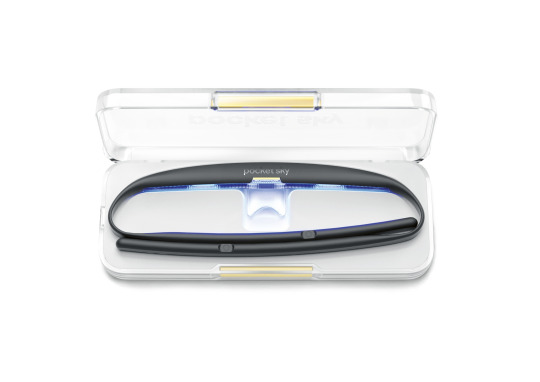
Image credit: Red Dot/Active Wearables
Packaging
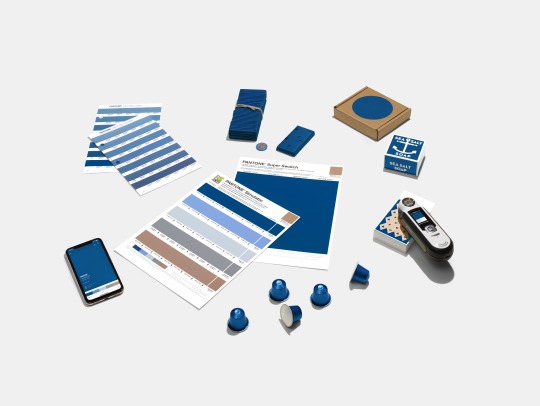
Classic Blue colour swatches and packaging products. Image credit: Pantone
Pantone said because of the colour’s relation to the sky at dusk, something we see every day, it maintains a perception of dependability and constancy.
"Classic Blue is an ideal shade for many applications in graphic design. This is especially true for packaging, where PANTONE 19-4052 Classic Blue conveys the message of credibility and reliability that today’s consumers are connecting to,’ the company said.
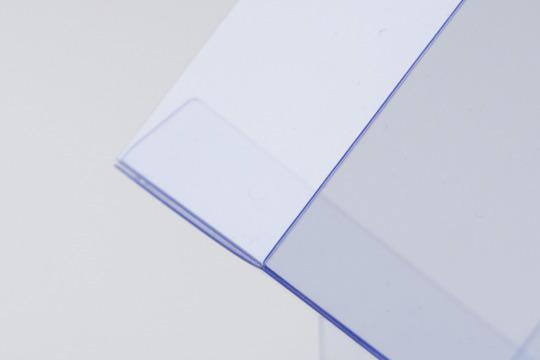
PET Blue Ocean Image credit: Seufert Transparente Verpackungen
At Packaging Innovations 2019, London, UK, Seufert, Germany, was awarded ‘Most Innovative Pack’ for its PET Blue Ocean Material, which has a blue hue and has up to 100% recycled content in the central layer of the polyester.
The manufacturer credited the material’s bluish tint to it conveying ‘freshness and purity to the consumer, setting products in an attractive light at the point of sale.’ The material can also be recycled as a mono film.
Q. What have you seen that is blue this year? Tell us in the comments box below.
2 notes
·
View notes
Text
A sustainable Christmas

Image credit: Rodolfo Marques
By Idha Valeur
With Christmas sneaking up on us and December in full swing and the added focus on sustainability we take a look at how you can make better material choices for a slightly more sustainable Christmas.
Let’s talk about Christmas trees.
In the December issue of Materials World our news writer deep dived into the debate between the real and the fake tree to find out once and for all – which is the most sustainable?
It all depends on consumer behaviour and how that plays into the tree’s lifecycle. The life cycle analysis of real versus plastic Christmas trees showed that for a fake tree to be sustainable the owner would need to keep the tree for more than five years and if they donated it to a charity shop or similar when looking to upgrade that would improve the analysis.
While if you were to choose a real tree, prioritise buying a locally sourced tree because transportation emissions play into its overall sustainability. One could make it more sustainable by re-using the tree after the festive season by replanting it in the garden etc.
Whatever you choose, make an informed purchase and assess whether you are likely to keep an artificial tree for several years or what fits with your lifestyle.
Read the full analysis in MW here: https://bit.ly/2PcC8Je
What about wrapping?
There are certain key aspects to be aware of when it comes to wrapping paper. The most important factor to think about is ‘Is it recyclable?’.
There is a simple test you can do to assess this, scrunch the paper in your hand. If the paper remains crumpled up it is safe to recycle. If it doesn’t, keep it away from the recycling bin.
youtube
Video credit: Recycle Now.
‘Wrapping paper is often dyed, laminated and/or contains non-paper additives such as gold and silver coloured shapes, glitter, plastics etc which cannot be recycled,’ Recycle Now’s website states.

Wrapping that is safe to use include brown paper and newspapers or you can buy recycled wrapping paper from several companies. For decoration fabric ribbons, twine and jute string are all better for the environment than shiny options. In general, avoiding metallic, shiny and/or glittery options is a safe move.
Another tip from Recycle Now is to avoid using sticky tape as this effects the paper’s recyclability. They recommend using ribbon or coloured string instead to secure the wrapping around the gifts to your loved ones.

Decorating with holly, evergreen and pine cones or cinnamon sticks that are good options for decor says Recycle Now. If they are not covered in glitter they can be composted after use.
Other general tips include reuse as much as you can with for example, saving the wrapping paper and reusing it for smaller gifts later down the line, return your tree to a recycling point, reduce food waste and making your own presents.
As a parting thought on Christmas packaging, Recycle Now and Wrap statistics shows that ‘at Christmas we consume enough card packaging to cover Big Ben nearly 260,000 times.’
Merry Christmas from us & celebrate environmentally friendly.
#sustainablility#christmas#wrapping#paper#recycle#recyclability#brown paper#string#presents#tree#plastic#natural materials#reduce#reuse#green#eco#environmentally friendly#environment#concious
65 notes
·
View notes
Text
Harvesting water with Aquatecture

Photo credit: Angeline Swinkels - photographer
By Shardell Joseph
A new aquatic design captures and harvest rainwater, allowing people in drought-stricken areas to catch utilise their own water. Design Academy Eindhoven Graduate, Shaakira Jassat, showcased the Aquatecture panel at Dutch Design Week last month.
Designed to fit on the outside of buildings in dense urban environments, the panels collect rainwaters as it filters through the openings in the structure. The water is then pumped into a grey-water system connected to the specified building.

‘The main goal was to create a water harvester that would fit in dense urban spheres through its compactness, visual identity and ability to integrate into architecture,’ Jassat said.
‘It consists of a modular panel designed to harvest rainwater. When integrated with technology, it has the ability to harvest moisture from the air,’ she added.
‘Instead of sliding off the surface, the panel permits water to be collected through a punctured, geometric surface. Aquatecture makes water conservation both visible and engaging.’

The panels are made from stainless steel, utilised for the materials durability and rust resistance. The steel was then studded with perforations in a slim, rounded funnel shape. Jassat tested the pattern, and other patterns, by making prototypes and showering them with water to simulate the rain.
Once the rainwater has been captures, the Aquatecture panels would allow residents to channel the rainwater into the building grey-water system, which can then be recycled along with the wastewater from sinks, washing machines and other appliances.
While the primary purpose of the panels is to catch rainwater, Jassat says that, if hooked up to other equipment, they could potentially also pull water from the atmosphere via condensation.
As part of her research into aquatic design, Jassat has also designed the Tea Drop tea machine, which has the ability to condense water vapour from the surrounding atmosphere. Jassat claimed that it could initiate an alternative for daily rituals, adding an element of sustainability to day to day routines.

‘It functions on its own time frame, so one has to wait for the tea vessel to be filled up with water, before it can be boiled and ready for making tea,’ she said.
Jassat conducted her research on tea farms in Asia, discovering that water is a large by-product of processing tea and harvesting tea leaves, which are dependent on weather and time.

Jassat's next step will be to test the design in situ on a building facade. She has also recently conducted research into air plants – the tillandsia and bromeliad species – which draw all their water needs from the air.
#water#capture#drought#urban#cities#aquatecture#water harvesting#water panels#sustainability#rainwater#water conservation#condensation#stainless steel#rust resistance#tea drop#modular panel#design#Architecture#water system
854 notes
·
View notes
Text
Plastic waste turns to brick

Credit: De Montfort University Leicester
By Idha Valeur
By using domestic waste plastic such as coffee cup lids and plastic bottles to create a new style of bricks, researchers from De Montfort University Leicester (DMU) proved a plastic waste brick could improve insulation by 10 times compared with traditional ones.
The university’s Senior Lecturer in Mechanical Engineering, Dr Karthikeyan Kandan explained that the inspiration came from nature, specifically from the nest of the Baya weaver – a bird found in the Indian subcontinent and Southeast Asia in general.
‘The Baya weaver bird’s nest’s ingenious construction gives it excellent thermal insulation and mechanical properties for inhabitation,’ Kandan said in a university release.
‘Inside there is a central nesting chamber, which makes it the ideal micro-climate for inhabitation. By replicating this structure, we have manufactured a brick that improves energy efficiency of modern buildings and therefore can reduce carbon footprint.’
The brick is 3D-printed and uses lattice architecture technologies, this include criss-cross strips of the plastic over each other to form a grid-esque structure in the brick.
To test the brick, DMU PhD Student, Saad Alqahtani, used a hot-box calorimeter to measure the brick’s U-value, a measure of the heat flow through insulating and building materials. A lower value means better insulation properties.
The bog-standard clay brick has a U-value of 2.94 Watts per Metre Kelvin (W/m²K), while Kandan’s new waste brick showed a value of 0.25 W/m2K.
‘This provides significant potential to not only improve the energy efficiency of modern building, but also to conserve space and reduce dead-weight in multi-story buildings,’ Kandan said.
224 notes
·
View notes
Text
Exploring space secrets with NASA telescope

James Webb Space Telescope. Credit: NASA/Chris Gunn
By Shardell Joseph
A team of NASA astronomers will observe dwarf galaxies and properties of dark matter using the newly completed James Webb Space Telescope. Fully assembled in late this year, the telescope was joined by two halves amounting to $9.7bln, and is scheduled to launch in March 2021.
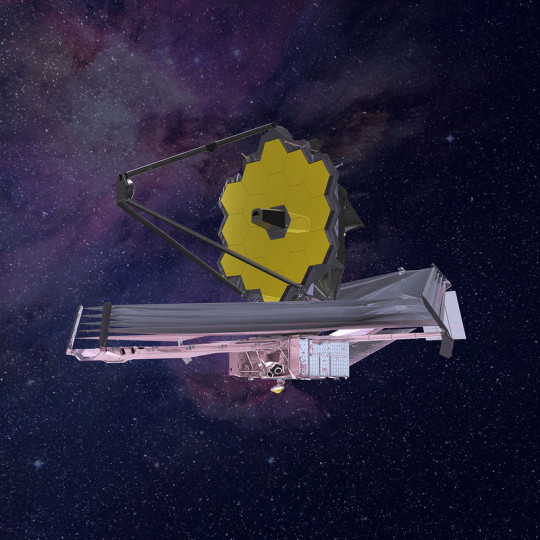
Artist conception of James Webb Space Telescope. credit: Northrop Grumman
‘The assembly of the telescope and its scientific instruments, sunshield and the spacecraft into one observatory represents an incredible achievement by the entire Webb team,’ NASA Goddard Space Flight Centre Webb Project Manager, Bill Ochs, said in a statement.
‘This milestone symbolises the efforts of thousands of dedicated individuals for over more than 20 years across NASA, the European Space Agency, the Canadian Space Agency, Northrop Grumman and the rest of our industrial and academic partners.’

Primary mirror segment testing. Credit: NASA/MSFC/David Higginbotham
The telescope will be used to conduct two separate studies – to observe dwarf galaxy companions to the Milky Way and the nearby Andromeda Galaxy. According to NASA, studying these small companions will help scientists learn about galaxy formation and properties of dark matter, which accounts for 85% of matter in the universe.
To observe these distant never-seen-before parts of the universe, the Webb observatory is equipped with an arsenal of revolutionary technologies. NASA claims it to be the most sophisticated and complex space science telescope ever created. Among the most challenging of these technologies is the five-layer sunshield, designed to protect the observatory's mirrors and scientific instruments from light and heat, primarily from the Sun.

Webb Telescope Crew Flexes Robotic Arm at NASA. Credit: NASA/Chris Gunn
According to NASA, Webb has passed other deployment tests carried out during its construction. Technicians used gravity-offsetting pulleys and weights to simulate zero-gravity, which would be encountered in space. This deployment was carefully monitored, tensioning each individual layer, and technicians concluded that once in orbit, they will function flawlessly.
‘This test showed that the sunshield system survived spacecraft element environmental testing, and taught us about the interfaces and interactions between the telescope and sunshield parts of the observatory," said NASA Webb Telescope Sunshield Manager, James Cooper. ‘Many thanks to all the engineers and technicians for their perseverance, focus and countless hours of effort to achieve this milestone.’

The James Webb Space Telescope's Sunshield Membrane. Credit: Northrop Grumman Aerospace Systems
Forboth programmes, the Webb telescope will be tested for its accuracy and precision. ‘It’s a very tricky situation, because basically what we want to measure are very tiny motions,’ explained co-investigator Andrea Bellini of STScI. ‘The accuracy we want to achieve is like measuring something that moves a few inches a year on the surface of the Moon, as seen from Earth.’
There is excitement around the development of the telescope as it will have the capacity to solve mysteries in our solar system, look beyond to distant worlds around other stars, and probe the mysterious structures and origins of our universe and our place in it.

Gold-coated Engineering Design Unit (EDU) Primary Mirror Segment. Credit: Drew Noel
#space exploration#space#telescope#NASA#dark matter#aerospace#galaxies#james webb space telescope#universe#andromeda galaxy#milky way#space mission
50 notes
·
View notes
Text
Membrane for protecting pacemakers
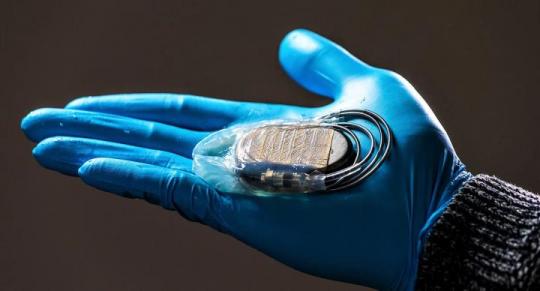
Above: A cellulose membrane for protecting pacemakers. Image credit: Hylomorph
By Anthony Caggiano
A cellulose membrane that can reduce the buildup of fibrotic tissue around cardiac pacemakers has been developed by ETH Zurich, Switzerland, scientists.
It could be used to help ease surgery when a pacemaker needs to be replaced.
Aldo Ferrari, a Senior Scientist in ETH Professor Dimos Poulikakos's group and at research institute Empa, said if too much tissue has grown around a pacemaker – which usually has a lifespan of five years when its battery expires – it can be hard to remove the device in surgery. The surgeon may need to spend time cutting the tissue, and risk of infection may increase.
Ferrari and his colleagues at ETH Zurich have developed a membrane with a special surface structure that is less conducive to the growth of fibrotic tissue than the smooth metal surface of pacemakers.
This membrane has now been patented and Ferrari is working with fellow researchers at the Wyss Zurich research center, the University of Zurich and the German Center of Cardiovascular Research in Berlin to make it market-ready for use in patients.
To test the device, pigs were given two pacemakers - one enveloped in the cellulose membrane, one without. After a year of testing, the researchers found the pigs’ bodies did not reject the cellulose membrane.
'This is an important finding because tolerance is a core requirement for implant materials,' Ferrari said.
The fibrotic tissue that formed around the membrane was about a third of what grew around the unencapsulated pacemakers.
Two reasons have been identified as to why this may have happened. The first is because the material is fibrous by nature. Francesco Robotti, lead author of the study and a scientist in Professor Poulikakos's group, explained further.
'When fibrotic tissue forms, the first stage is the deposition of proteins on the surface. A fibrous membrane surface impedes this process,’ he said.
The second factor is the researchers created the membrane with honeycomb-like indentations in the surface, each measuring 10 micrometres in diameter.
'These indentations make it difficult for the cells that form fibrotic tissue to adhere to the surface - the second stage in the formation processes,' Robotti said.
The scientists want to apply for approval for clinical trials in humans in partnership with ETH spin-off Hylomorph, which will be responsible for commercialising the membrane. The trials are slated to start next year at three cardiac centres in Germany.
The findings were reported in Biomaterials.
48 notes
·
View notes
Text
Monitoring recycled polymers
youtube
Credit: MORE
By Idha Valeur
A new tool for monitoring how much of recycled polymers get used in new products has been launched in the UK.
The recycling tool, called MOnitoring Recyclates for Europe (MORE), aims to track how much of recycled polymers become new products, as well as making a record of what the industry is doing to reach the 10 million tonnes of recycled polymers being used every year between 2025-2030 target set by the European Union (EU). This monitoring tool is now available for UK plastic converting companies.
By using MORE, UK companies can record and submit information on to what extent recycled polymers have been used in their new products.
On Monday 11 November, British Plastics Federation Director General, Philip Law, and European Plastics Converters Managing Director, Alexandre Dangis, signed a contract in London, making the UK – officially – the 13th country in the EU to supply the industry with the platform.
‘The plastics industry in the UK has been working to integrate more recycled content into its products and we are very happy to be making MORE available within the UK. Participation in the platform is key to its success and we urge companies to help us develop this valuable data so we can understand and communicate the UK’s progress,’ Law said.
For more information about MORE visit their website at https://bit.ly/33TP2SF
20 notes
·
View notes